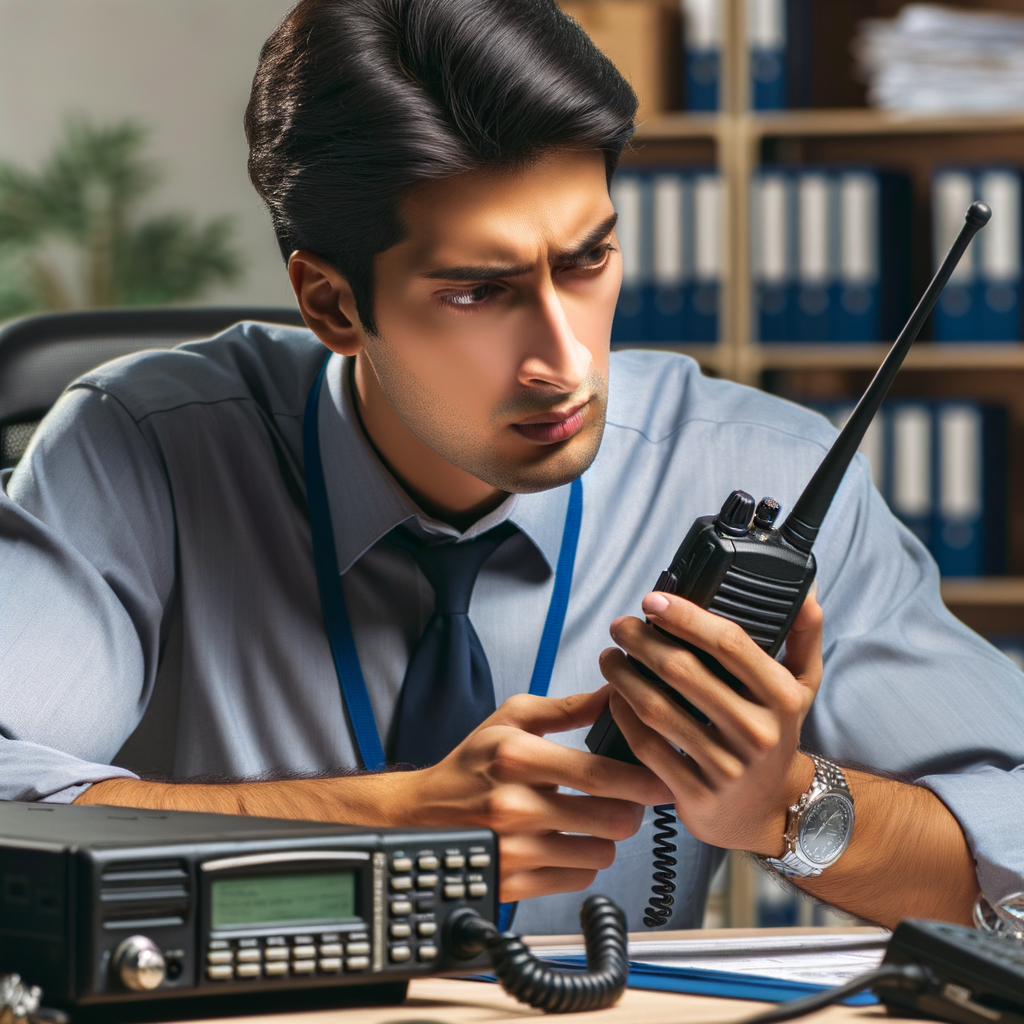
Choosing the right two-way radio system can be a daunting task for IT administrators who are more familiar with WiFi networks, cellular solutions, and general IT infrastructure than radio frequency (RF) communications. However, as the “technical experts” in many organizations, IT admins are often called upon to make fast, informed choices about professional radio systems for security, maintenance, events, or crisis response. This guide aims to demystify two-way radio technology and provide a practical framework for IT professionals tasked with these critical communication decisions.
Understanding Two Way Radios: What IT Admins Need to Know
Two-way radios are purpose-built for instant, reliable voice communication, especially when cellular or WiFi networks are unavailable or unsuitable. Unlike smartphones or VoIP devices, radios transmit directly via radio frequencies (RF), offering ruggedness, simplicity, and independence from public networks. For IT admins accustomed to digital protocols and IP addressing, it’s important to understand that radio systems operate in analog or digital modes on licensed (or sometimes unlicensed) spectrum, each with its own rules and limitations.
The key advantage of two-way radios is their speed and reliability. A radio user can transmit to a group at the push of a button with no dialing or connection setup, and without depending on external service providers, or with a service provider independent of the public network. This makes radios ideal for time-sensitive situations like emergency response, facility operations, and event coordination. The challenge for IT is learning the basics of frequency management, licensing, coverage planning, and system design—areas that overlap with, but are distinct from, the skills needed for typical IT networks.
When considering two-way radios, IT admins must also factor in system scalability, coverage area, user density, and the realities of RF propagation within their buildings or campuses. Unlike mesh or Wi-Fi, radio waves interact with physical obstacles differently, and legal regulations govern which spectrum you can use and how. A sound choice requires balancing organizational needs with technical realities, regulatory obligations, and the unique operational culture of end users.
Co-channel Interference: The Most Common Radio Challenge
Co-channel interference is the bane of all wireless technology users and often the first painful surprise for IT professionals new to the field. This problem occurs when multiple users or groups attempt to communicate on the same frequency channel simultaneously, causing overlapping conversations, garbled audio, or, in the worst case, total communication failure.
Co-channel interference is especially common in urban areas or densely populated environments where many organizations operate similar radios. Public, unlicensed radio systems (like FRS or some business band radios) are particularly susceptible because there is no mechanism to prevent outsiders from using the same channel. Even licensed systems can suffer if frequency coordination is lax or if radios are programmed carelessly.
To mitigate co-channel interference, IT admins should consider systems that offer exclusive frequencies—or at minimum, access to more channels and tighter user discipline. Careful radio programming, training for end users, and possible use of digital technologies (which can filter out unwanted signals) are also effective strategies. Ultimately, understanding the sources and symptoms of co-channel interference will help IT admins make more resilient radio choices.
Exclusive vs Shared Frequencies: Choosing the Right Path
One of the first decisions IT needs to make is whether to invest in radios operating on exclusive or shared frequencies. Shared frequencies, used by public radio services or low-cost business radios, offer simplicity and lower upfront costs but leave you open to interference from other nearby users. In contrast, exclusive frequencies (FB8), which require FCC licensing, provide your organization sole legal use of a specific channel within a geographic area.
Exclusive frequencies dramatically reduce the risk of co-channel interference and enhance privacy, making them ideal for security, healthcare, and critical operations. However, obtaining and maintaining a license involves regulatory compliance, fees, and sometimes lengthy application processes. IT admins must weigh these administrative burdens against the operational risks of shared channels.
For critical communications, most organizations benefit long-term from the investment in exclusive frequencies, especially as workplace radio use grows. Vendors like Mobile Relay can assist with the application process, frequency selection, and ongoing compliance. Even for temporary or event-driven use, it may be wise to secure short-term licenses for exclusive operation.
Comparing Simplex, Repeater, and Trunked Systems
Simplex radio systems are the most basic configuration: radios communicate directly with each other on a single frequency, providing reliable operation over short distances without infrastructure. This simplicity is appealing for small teams or sites where coverage needs are minimal. However, simplex systems are severely limited by obstacles, building materials, and geographic size.
Repeaters extend coverage by relaying signals between radios and the repeater site, often located at points high above the surrounding area. This configuration enables users to communicate over a broad area, through buildings, and across multiple floors. IT admins should know that repeaters require dedicated hardware, careful placement, and a second frequency channel for duplex communication.
Trunked radio systems are the most advanced, dynamically allocating channels from a pool to optimize spectrum use and provide robust, scalable communications for large organizations. Trunked systems can be stand-alone or part of a networked solution, offering features like call groups, priority access, and encryption. While more complex to set up and manage, trunking systems are the closest analog to managed WiFi or cellular networks in the radio world—ideal for sites with hundreds of users and multiple departments.
Achieving Coverage, Compliance, and Network Independence
A key strength of two-way radios is public network independence: your system doesn’t rely on cell towers, WiFi, or internet connectivity, making it resilient to outages or cyberattacks. This independence, however, means IT admins must carefully plan for coverage, ensuring reliable signal strength wherever users need to communicate. Site surveys, coverage mapping, and, if necessary, consulting with vendors like Mobile Relay can help optimize radio placement and infrastructure.
Compliance is another critical concern. Using the right frequencies, power levels, and equipment is regulated by federal authorities—typically the FCC in the U.S. Operating outside these guidelines can result in fines, interference complaints, or even forced shutdowns. IT admins should confirm that radios are properly licensed, programmed, and that end users are trained on best practices and legal requirements.
Lastly, network independence doesn’t have to mean isolation. Modern digital radio systems can integrate with dispatch consoles, voice recording, or even interoperate with existing IT systems via gateways. For organizations seeking a hybrid approach, companies like Mobile Relay can provide solutions that bridge the gap between radio and IT, offering both resilience and advanced features.
For IT administrators thrust into the world of two-way radio communications, the learning curve can be steep but surmountable. Understanding the unique challenges of co-channel interference, the pros and cons of exclusive versus shared frequencies, and the differences between simplex, repeater, trunked systems and network trunking can make the difference between a successful deployment and ongoing headaches. By focusing on coverage, compliance, and the right mix of independence and integration, IT admins can ensure their organizations have reliable communications—no matter what the next emergency or operational challenge brings. And with expert help from specialized vendors like Mobile Relay, crafting a professional radio solution is more accessible than ever.
